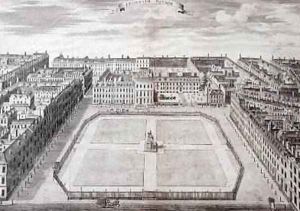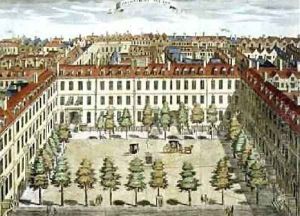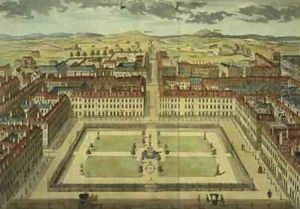Sutton Nicholls Paintings
Sutton Nicholls was an English engraver, draughtsman, and printmaker known for his detailed views of cities, especially London, and his work on various books and atlases during the late 17th and early 18th centuries. Born in 1668, Nicholls emerged as a significant figure in the printmaking world of his time, contributing to the visual documentation of urban landscapes and architectural achievements of England.
Nicholls is perhaps best remembered for his collaboration with other artists and publishers of his era, producing engravings that illustrated the rapidly changing face of London and other cities. His works often depicted panoramic views and were notable for their attention to detail, providing valuable historical insights into the architecture and urban planning of the period. These engravings served not only as works of art but also as important records of buildings and places, many of which have since been altered or no longer exist.
Throughout his career, Sutton Nicholls worked on several prestigious projects, including maps and views for atlases such as 'Britannia Depicta' and 'Le Nouveau Theatre de la Grande Bretagne'. His engravings were widely distributed, appearing in books and as separate prints, catering to the growing interest among the British public in topography and the visual arts. Nicholls' ability to capture the essence of urban and rural landscapes, combined with his technical skill as an engraver, made his work highly sought after during his lifetime and contributed significantly to the visual culture of early 18th-century Britain.
Despite his contributions to the art and cartography of his time, Sutton Nicholls has not been as widely remembered as some of his contemporaries. Nevertheless, his engravings continue to be of interest to historians, art collectors, and those fascinated by the historical development of cities. Nicholls passed away in 1729, leaving behind a body of work that remains valuable for its artistic merit and historical documentation. His legacy is preserved in the collections of major museums, libraries, and archives, where his prints continue to be studied and appreciated for their beauty and historical significance.


